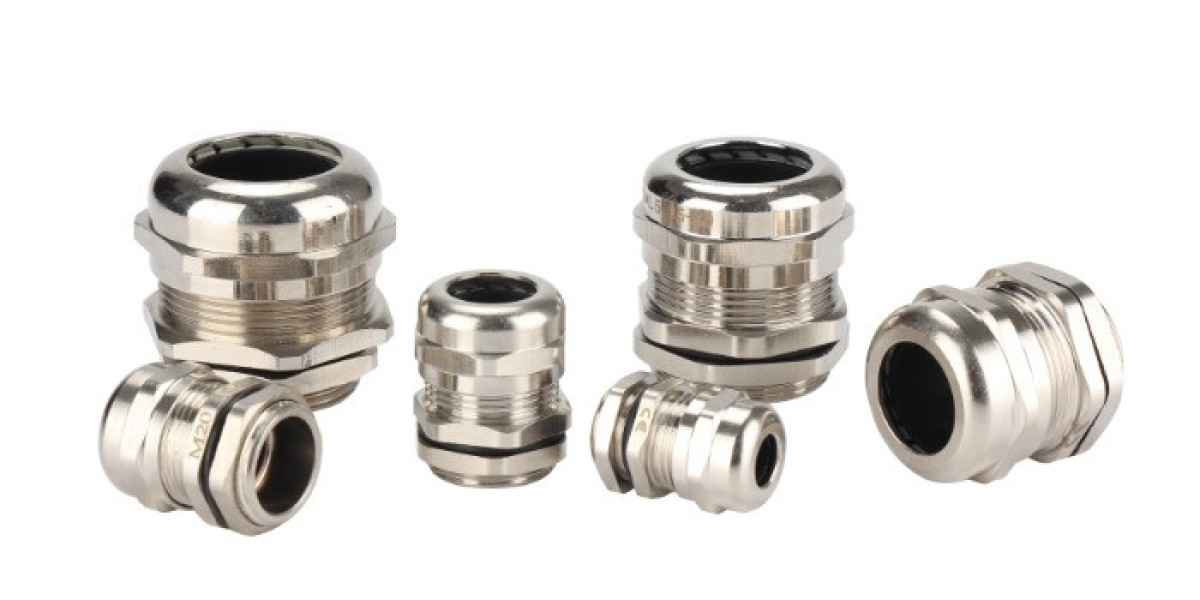Understanding Brass Cable Gland Accessories
Brass Cable Gland Accessories have long been favoured in the electrical and engineering sectors for their exceptional conductivity, corrosion resistance, and malleability. Composed primarily of copper and zinc, brass alloys can be tailored to meet specific requirements, making them highly versatile in diverse environments. The inclusion of other elements such as lead, tin, or aluminium further enhances the properties of brass, rendering it suitable for demanding applications.
The Advantages of Brass Cable Glands
- Superior Conductivity: Thanks to its high copper content, brass exhibits excellent electrical conductivity, ensuring optimal performance in electrical systems.
- Corrosion Resistance: Brass cable glands are inherently resistant to corrosion, making them ideal for outdoor or corrosive environments where exposure to moisture or chemicals is a concern.
- Malleability: The malleability of brass allows for intricate machining and customization, facilitating precise fittings and installations.
- Cost-Effective: Brass cable glands often offer a cost-effective solution without compromising on quality, making them a preferred choice for budget-conscious projects.
- Wide Range of Applications: From marine environments to industrial settings, brass cable glands find applications across various sectors, proving their versatility and reliability.
Exploring Stainless Steel Cable Glands
Stainless steel cable glands, on the other hand, are renowned for their exceptional strength, durability, and resistance to corrosion and extreme temperatures. Composed primarily of iron, chromium, nickel, and other alloying elements, stainless steel exhibits superior mechanical properties, making it an ideal choice for demanding applications where robustness is paramount.
The Advantages of Stainless Steel Cable Glands
- High Strength: Stainless steel boasts impressive tensile strength and resistance to mechanical stress, ensuring reliable performance in harsh environments.
- Corrosion Resistance: With its chromium-rich oxide layer, stainless steel forms a passive barrier against corrosion, making it suitable for marine, chemical, and coastal applications.
- Temperature Resistance: Stainless steel cable glands retain their integrity and performance across a broad temperature range, from sub-zero environments to high-temperature industrial settings.
- Hygienic Properties: In industries such as food processing and pharmaceuticals, stainless steel's non-porous surface and resistance to bacterial growth make it an ideal choice for maintaining strict hygiene standards.
- Longevity: Stainless steel cable glands are renowned for their longevity and minimal maintenance requirements, offering a reliable and durable solution for critical infrastructure.
Brass vs. Stainless Steel: Key Considerations
When deciding between Brass Cable Gland Accessories and stainless steel cable glands, several factors must be taken into account to ensure the optimal selection for specific applications.
- Environmental Conditions: Consider the operating environment, including exposure to moisture, chemicals, temperature fluctuations, and mechanical stress. Brass cable glands excel in moderate conditions, while stainless steel offers superior performance in corrosive or extreme environments.
- Budget Constraints: Evaluate the project budget and cost considerations. While brass cable glands typically offer a more economical solution, stainless steel may be justified for applications requiring enhanced durability and longevity.
- Regulatory Compliance: Ensure compliance with industry standards and regulations governing materials and performance requirements. Both brass and stainless steel cable glands may have specific certifications and approvals for use in certain industries or applications.
- Aesthetic Considerations: In architectural or aesthetic-sensitive installations, the visual appearance of cable glands may be a factor. Stainless steel's sleek and modern finish may be preferred in such scenarios, whereas brass offers a more traditional or vintage aesthetic.
- Installation Requirements: Consider ease of installation, compatibility with existing equipment, and the need for customization or specialised fittings. Brass's malleability allows for easier machining and customization, while stainless steel may require specialised tools or expertise.
Conclusion: Choosing the Right Cable Gland Material
In conclusion, both Brass Cable Gland Accessories and stainless steel cable glands offer unique advantages and applications in the realm of cable management. The decision between brass and stainless steel ultimately hinges on specific project requirements, environmental factors, budget considerations, and aesthetic preferences. By carefully evaluating these factors and consulting with industry experts, engineers, and suppliers, stakeholders can make informed decisions to ensure the integrity, safety, and longevity of their electrical installations. Whether opting for the conductivity and versatility of brass or the strength and durability of stainless steel, choosing the right cable gland material is paramount for the success of any electrical project.



